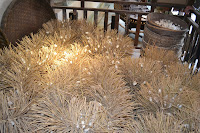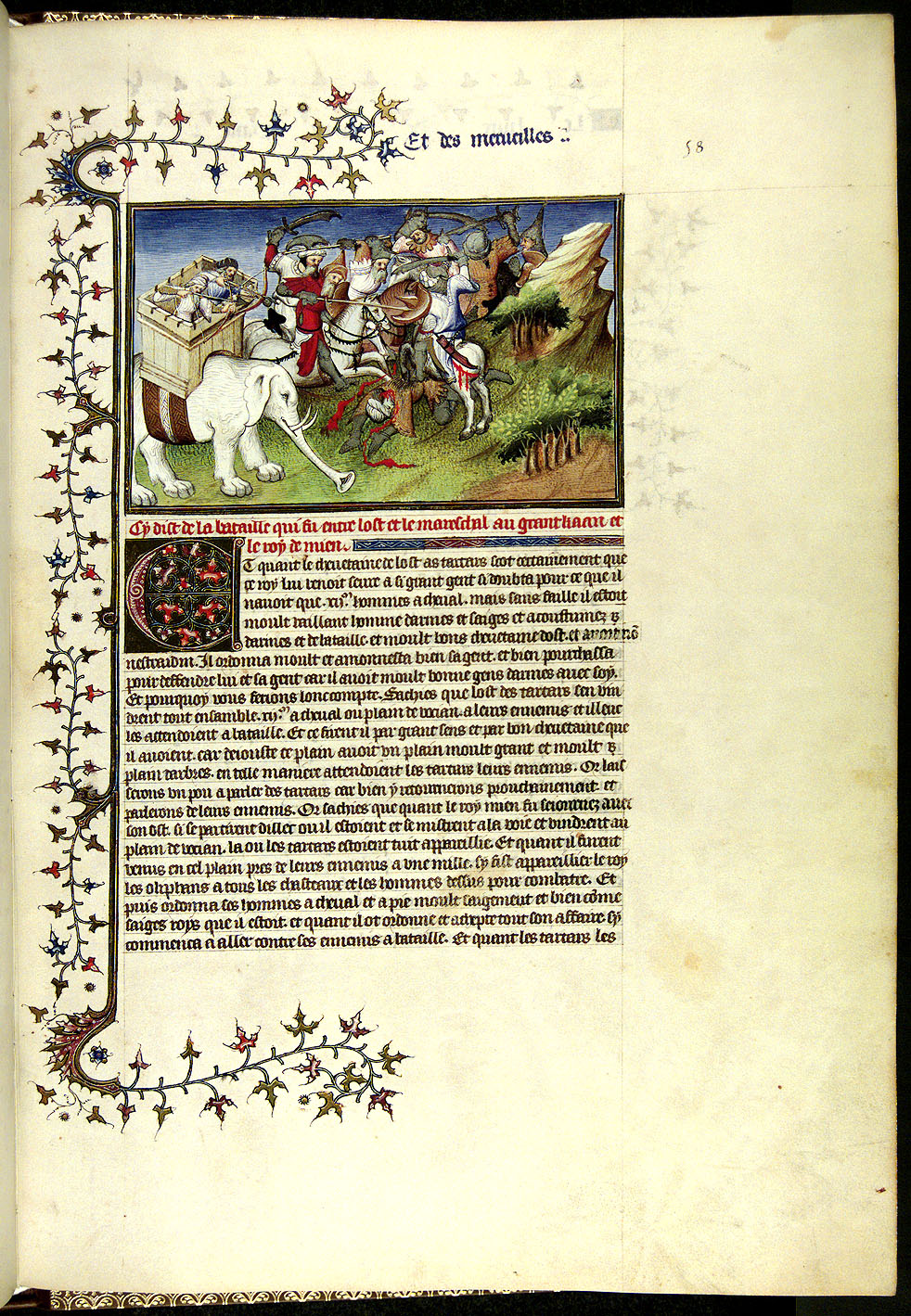 |
| Traditional cocoon bed |
 |
| Spinning the thread |
 |
| The brush captures the silk thread |
The legend of silk production in China is fascinating apparently Empress Hsi Ling Shi, wife of Emperor Huang Ti (also called the Yellow Emperor), was the first person to accidentally discover silk as weavable fiber.
One day, when the empress was sipping tea under a mulberry tree, a cocoon fell into her cup and began to unravel. The empress became so enamored with the shimmering threads, she discovered their source, the Bombyx mori silkworm found in the white mulberry. The empress soon developed sericulture, the cultivation of silkworms, and invented the reel and loom. Thus began the history of silk.
Whether or not the legend is accurate, it is certain that the earliest surviving references to silk history and production place it in China; and that for nearly 3 thousand years, the Chinese had a global monopoly on silk production.
 |
| Stretching the cocoon over bamboo. |
 |
| Workers stretch the cocoon 'sock' even further |
 |
| The kids have a turn. |
 |
| Its really strong! many layers make a quilt. |
Though first reserved for Chinese royalty, silk spread gradually through the Chinese culture both geographically and socially. From there, silken garments began to reach regions throughout Asia. Silk rapidly became a popular luxury fabric in the many areas accessible to Chinese merchants, because of its texture and luster.

Demand for this exotic fabric eventually created the lucrative trade route now known as The Silk Road, taking silk, porcelain and jade westward and bringing gold, silver, Arab horses and wools to the East. Rome was a major importer of silk and knew China as 'Seres' - the land of silk.
It was named the Silk Road after its most valuable commodity, silk was considered even more precious than gold! The silk road became very busy in the Han dynasty exposing Xi'an the then capital of China to many influences from the west eg religion and art.
The Silk Road was some 4,000 miles long stretching from China to the Mediterranean Sea. A caravan tract, the Silk Road followed the Great Wall of China to the north-west, bypassing the Takla Makan desert, climbing the Pamir mountain range, crossing modern-day Afghanistan and going on to the Levant, with a major trading market in Damascus. From there, the merchandise was shipped across the Mediterranean Sea. Few people traveled the entire route; goods were handled mostly by a series of middlemen.
The Chinese realized the value of the beautiful material they were producing and kept its secret safe from the rest of the world for more than 3000 years. Travelers were searched thoroughly at border crossings and anyone caught trying to smuggle eggs, cocoons or silkworms out of the country were summarily executed. Thus, under penalty of death, the mystery of sericulture remained a well-kept secret for almost three thousand years.
The final decline of the route came when large ships in the 15th century could travel with less cost and danger. However the geographical knowledge had grown immensely because of the routes as shown in the Catalan Map - a 14th century map made for Charles V of France in the middle ages. Also further details about China were aided by Marco Polo's account (1254 – 1324) he was a Christian merchant from the Venetian Republic whose travels were recorded in Il Milione, a book which introduced Europeans to Central Asia and China.
Susan

No comments:
Post a Comment